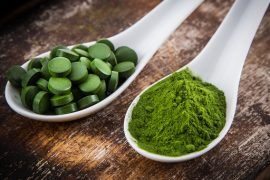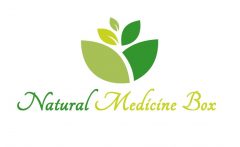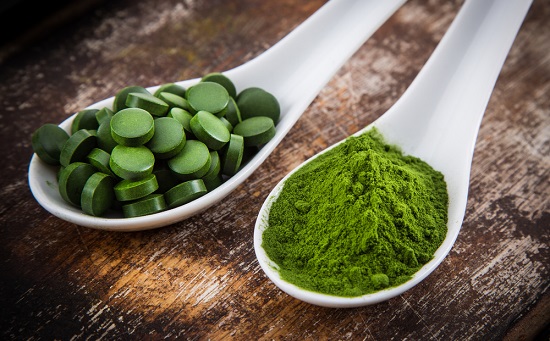1. Spirulina is Extremely High in Many Nutrients
Spirulina is an organism that grows in both fresh and salt water.
It is a type of bacteria called cyanobacterium, which is often referred to as blue-green algae.
Just like plants, cyanobacteria can produce energy out of sunlight, via the process called photosynthesis.
Spirulina was consumed by the Aztecs back in the day, but became popular again when NASA proposed that it could be grown in space and used by astronauts (1).
A standard daily dose of spirulina is 1-3 grams, but doses of up to 10 grams per day have been used effectively.
It is actually quite amazing how nutritious it is.
A single tablespoon (7 grams) of dried spirulina powder contains (2):
- Protein: 4 grams.
- Vitamin B1 (Thiamin): 11% of the RDA.
- Vitamin B2 (Riboflavin): 15% of the RDA.
- Vitamin B3 (Niacin): 4% of the RDA.
- Copper: 21% of the RDA.
- Iron: 11% of the RDA.
- It also contains decent amounts of magnesium, potassium and manganese, and small amounts of almost every other nutrient that we need.
This is coming with only 20 calories, and 1.7 grams of digestible carbohydrate.
Gram for gram, this means that spirulina may literally be the single most nutritious food on the planet.
A tablespoon of spirulina contains a small amount of fat (around 1 gram), including both omega-6 and omega-3 fatty acids in about a 1.5:1 ratio.
The quality of the protein in spirulina is considered excellent, comparable to eggs. It contains all the essential amino acids that we need.
It is often claimed that spirulina contains vitamin B12, but this is false. It contains pseudovitamin B12, which has not been shown to be effective in humans (3, 4).2. Spirulina Has Powerful Antioxidant and Anti-inflammatory Properties
Oxidative damage can harm our DNA and cells.
This damage can drive chronic inflammation, which contributes to cancer and other diseases (5).
Spirulina is a fantastic source of antioxidants, which can protect against oxidative damage.
The main active component is called phycocyanin. This antioxidant substance also gives spirulina its unique blue-green color.
Phycocyanin can fight free radicals and inhibit production of inflammatory signalling molecules, providing impressive antioxidant and anti-inflammatory effects (6, 7, 8).
More Next
5 Miracle Health Benefits of Spirulina Natures #1 Superfood





Britany Lee I have some of this
Anna Helms and Blake Helms
anyone love this post as much as i do ?
Love it ayurveda Atman?
Cool thanks :
My boys eat them 3x plus per week